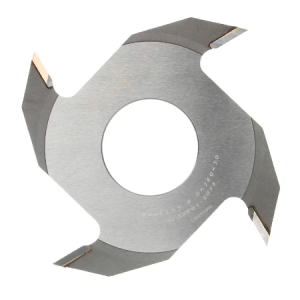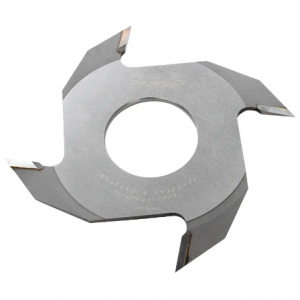Woodworking enthusiasts, budding crafters, and seasoned crafters all know the value of precision and accuracy in their creations. When it comes to creating perfect finger joints in wood furniture and crafts, the right tool can make all the difference. Today, we're going to take a deep dive into the world of finger-jointing knives—an essential tool for achieving seamless joints in woodworking projects. Whether you're a hobbyist or a professional woodworker, understanding the uses, benefits, and techniques of finger-joint knives is critical to achieving unparalleled craftsmanship.
1. What is splicing scissors? :
A finger joint cutter is a specialized woodworking tool designed to create finger joints, also known as comb or box joints, by deftly cutting the interlocking fingers on adjacent pieces of wood. These joints are known for their incredible structural integrity and aesthetic appeal, making them highly sought after in furniture making, cabinetry and intricate woodwork. The precision and accuracy of a finger-joint cutter ensures a snug fit, creating a seamless seam that is as strong as it is beautiful.
2. Advantages of finger joint knife :
Using finger joint cutters offers several advantages for woodworking hobbyists and professionals. First, it creates a strong, durable joint that will stand the test of time. Interlocking fingers provide extra strength and stability, ensuring the joint remains intact even under heavy loads or changes in humidity. Second, finger-joint cutters allow efficient use of material by maximizing the surface area of the seam, thereby minimizing waste. Third, these knives have exceptional woodworking precision and precision, guaranteeing perfectly aligned joints every time. Finally, the versatility of finger joint knives allows woodworkers to experiment with joints of various sizes and shapes, expanding the scope of their creativity.
3. Skills to achieve perfect knuckles :
In order to master the art of creating perfect finger joints, it is crucial to follow proper technique when using a finger joint cutter. First, selecting the correct size and shape of cutters for the desired joint is critical. Proper selection of knives allows for a perfect fit of fingers, resulting in a tight, strong joint. Second, maintaining a steady and controlled feed rate while operating the cutter ensures consistent, clean cuts. It is also critical to properly secure the two workpieces and align them accurately before cutting. Use jigs and fixtures to help achieve precise positioning and minimize errors. Finally, attention to factors such as grain direction, wood thickness, and knife depth adjustment can help achieve seamless seams while avoiding chipping or tearing.
Conclusion:
Investing in a high-quality finger-jointing knife is a game-changer for any woodworking project where perfection is sought. This versatile tool brings unparalleled precision, durability, and aesthetics to the table. By understanding its benefits and following the correct technique, woodworkers of all levels can improve their craft and create stunning joints that impress both visually and with structural integrity.
Post time: Jul-12-2023


